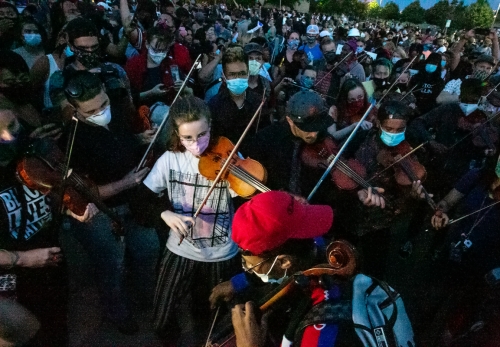News & Notes
Ten things I’m grateful for and hopeful about
As we put a raw, revealing year behind us, I’m thinking about all the things I’ve been grateful for during the pandemic and what I’m hopeful about for 2021. Some of those things are personal rather than professional, and I’ve left those out — even though, for me, one of the lessons of 2020 has been that the very idea of a wall between the personal and professional may be part of the problem, and that it’s linked to capitalism and whiteness in some complicated ways.
Deep breath through the mask.
Here are ten grateful and hopeful things that are connected to my work in the cultural sector…and maybe to yours, too.
#1—Grateful
Nandi Bushell, for embodying the spirit of music
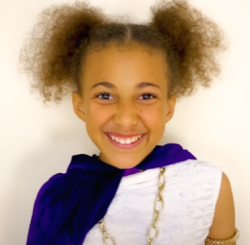
Nothing has made me happier during these dark months than watching this ten-year-old British prodigy scream while she drums because she just can’t contain herself, or bubble over with excitement when rock legend Dave Grohl accepts her challenge on YouTube. In fact, the connection between these two musicians — the veteran’s obvious affection and gobsmacked respect for the newcomer, the kid’s giddy gratitude and joy in matching him riff for riff — is one of the most touching and inspiring things on the web. It’s not just that she’s absurdly talented. It’s that her relationship to music is so embodied, wholehearted, jubilant, and infectious that she’s a walking lesson for professionals everywhere (hello #classicalmusic?). It’s not a performance in any cynical sense, but she’s a true performer.
#2—Hopeful
Kamala Harris, for (maybe) getting what culture can do
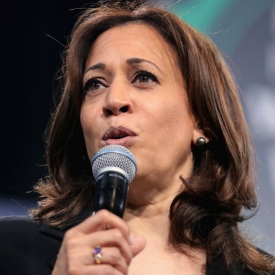
The soon-to-be vice president is not only the first woman, first Black woman, first Asian American, and first graduate of an HBCU to hold that office — although those things would be plenty of reason for hope given this country’s history of patriarchy, racism, and xenophobia. She’s also deeply connected to the arts and museums: grew up playing horn and violin, was on the boards of SFMOMA and SFJAZZ (our clients!), has worked on the removal of Confederate monuments (see Mellon mention in #4, below), and supported bills creating new Smithsonian museums for Latino culture and women’s history. With someone like that in the West Wing, maybe we don’t need a cabinet-level secretary of culture, as some have argued. We do need — very badly — an ambitious, national arts and culture strategy to help this country process what we’ve been through, reflect on who we are, and imagine where we want to go together. Does Harris get that? Signs are promising, as arts leaders are speculating and as this feel-good video from the campaign suggests. Fingers crossed.
#3—Grateful
James Baldwin and other generous minds, past and present
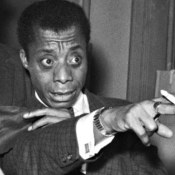 Like many white people trying to catch up with reality during 2020, I’ve been reading Black authors dead and living. James Baldwin’s 1963 bestseller The Fire Next Time left me sleepless in a camping tent this summer, vibrating with his intellectual energy and historical clarity. It’s been moving to hear echoes of Baldwin and other 20th and 21st century African American thinkers in the words of many Black artists, activists, funders, and conference speakers I’ve heard this year — perhaps most vividly from Lisa Yancey and Marc Bamuthi Joseph. I’m thankful to be coming, however late, to a conversation that’s both urgent and centuries old. And I’m grateful to Lisa and other collaborators, like Katrina Bledsoe and Ciara Knight, for being so generous and patient as I learn. (Top of my nightstand stack: Eddie Glaude’s new book on Baldwin.)
Like many white people trying to catch up with reality during 2020, I’ve been reading Black authors dead and living. James Baldwin’s 1963 bestseller The Fire Next Time left me sleepless in a camping tent this summer, vibrating with his intellectual energy and historical clarity. It’s been moving to hear echoes of Baldwin and other 20th and 21st century African American thinkers in the words of many Black artists, activists, funders, and conference speakers I’ve heard this year — perhaps most vividly from Lisa Yancey and Marc Bamuthi Joseph. I’m thankful to be coming, however late, to a conversation that’s both urgent and centuries old. And I’m grateful to Lisa and other collaborators, like Katrina Bledsoe and Ciara Knight, for being so generous and patient as I learn. (Top of my nightstand stack: Eddie Glaude’s new book on Baldwin.)
#4—Hopeful
Big philanthropic visions of equity
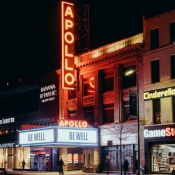 For years, some of the major national and regional foundations that support arts and culture have been more progressive than the institutions they fund. Others have underwritten the status quo. But in the last few years, new leadership and program staff at many foundations have begun to tip the field decisively. I’ve been thrilled to see the scale and seriousness of new programs announced this year, like the Ford Foundation-led America’s Cultural Treasures consortium ($156 million to keystone BIPOC arts organizations like the Apollo Theater, pictured, plus regional philanthropic partnerships in seven U.S. cities); the Mellon Foundation’s Monuments Project ($250 million to reimagine memorials and public commemorative or storytelling spaces); and what sounds like a sweeping, inclusive study of BIPOC arts and culture organizations being planned by the Wallace Foundation (up to $1 million in research alone, presumably to inform significant later grantmaking). Whether you care about the cultural sector becoming more equitable in itself or contributing more actively to equity in American communities (or both, while we’re at it), these are big, inspiring moves.
For years, some of the major national and regional foundations that support arts and culture have been more progressive than the institutions they fund. Others have underwritten the status quo. But in the last few years, new leadership and program staff at many foundations have begun to tip the field decisively. I’ve been thrilled to see the scale and seriousness of new programs announced this year, like the Ford Foundation-led America’s Cultural Treasures consortium ($156 million to keystone BIPOC arts organizations like the Apollo Theater, pictured, plus regional philanthropic partnerships in seven U.S. cities); the Mellon Foundation’s Monuments Project ($250 million to reimagine memorials and public commemorative or storytelling spaces); and what sounds like a sweeping, inclusive study of BIPOC arts and culture organizations being planned by the Wallace Foundation (up to $1 million in research alone, presumably to inform significant later grantmaking). Whether you care about the cultural sector becoming more equitable in itself or contributing more actively to equity in American communities (or both, while we’re at it), these are big, inspiring moves.
#5—Grateful
David Attenborough, for a lifetime of connecting us to what we’re losing
Don’t worry, Attenborough didn’t pass away this year. But the “witness statement” he offered this year, at 94, is a celebration of his life’s work and an elegy (with notes of optimism) for the natural world we’ve been dismantling species by species. It’s heart-wrenching, vivid as a dream, and impossible to shake off. If the global pandemic nudges society even a little further toward acknowledging the real, underlying crisis — climate change — it may in some sad sense have been worth it. Attenborough may not be an artist but he is a culture bearer, our Virgil taking us by the arm and walking us through our own story. We couldn’t see it without him, and we can’t change it until we see it.
#6—Hopeful
The new language-frame of arts & culture work
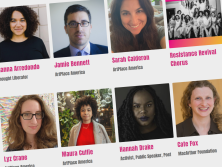 Or maybe it’s not new; maybe I was just inside a different box before 2020. But during the pandemic and the resurgent Black Lives movement, I’ve been struck by the words I’m hearing at virtual conferences, webinars, and facilitated sessions — a language-frame that’s profoundly different from what I used to hear (and used to say myself) at pre-COVID conferences in the arts, museums, science engagement, placemaking, philanthropy, etc. It’s not just the land acknowledgments and self-descriptions for the visually impaired. It’s words like “Love.” “Trust.” “Dignity.” “Power.” “Healing.” “Respect.” “Justice.” “Self-knowledge.” I hadn’t noticed the absence of that kind of talk when I used to attend big association conferences or academic symposia; it would’ve come across as too subjective, too activist for “professional” or “scholarly” discourse. But human, subjective experience and community change are the professional work now, at least in some quarters of the arts and culture field. (The final ArtPlace Summit was an eloquent example, as was the recent Grantmakers in the Arts convening.) Of course, at other kinds of gatherings this year, where the talk was more about selling tickets or memberships, monetizing digital offerings, or converting hands-on science museums to touchless experiences, the language-frame was more familiar, pragmatic. No shade on those conversations; nonprofit organizations need revenue and they need to reopen safely, and our research certainly informs those goals. Simultaneously, though, the emerging humanistic language of impact and community reveals deep shifts that have already taken place, and it may make possible new kinds of progress.
Or maybe it’s not new; maybe I was just inside a different box before 2020. But during the pandemic and the resurgent Black Lives movement, I’ve been struck by the words I’m hearing at virtual conferences, webinars, and facilitated sessions — a language-frame that’s profoundly different from what I used to hear (and used to say myself) at pre-COVID conferences in the arts, museums, science engagement, placemaking, philanthropy, etc. It’s not just the land acknowledgments and self-descriptions for the visually impaired. It’s words like “Love.” “Trust.” “Dignity.” “Power.” “Healing.” “Respect.” “Justice.” “Self-knowledge.” I hadn’t noticed the absence of that kind of talk when I used to attend big association conferences or academic symposia; it would’ve come across as too subjective, too activist for “professional” or “scholarly” discourse. But human, subjective experience and community change are the professional work now, at least in some quarters of the arts and culture field. (The final ArtPlace Summit was an eloquent example, as was the recent Grantmakers in the Arts convening.) Of course, at other kinds of gatherings this year, where the talk was more about selling tickets or memberships, monetizing digital offerings, or converting hands-on science museums to touchless experiences, the language-frame was more familiar, pragmatic. No shade on those conversations; nonprofit organizations need revenue and they need to reopen safely, and our research certainly informs those goals. Simultaneously, though, the emerging humanistic language of impact and community reveals deep shifts that have already taken place, and it may make possible new kinds of progress.
#7—Grateful
My colleagues at Slover Linett
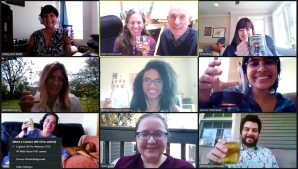 I had already felt fortunate to work with some of the kindest, smartest, most collaborative, and most dedicated colleagues imaginable. COVID upped the ante, as it has all over, and revealed additional talents for adaptation, resilience, mutual support, and tolerating uncertainty — including the talents of a researcher who joined us fresh out of her PhD program just as the pandemic was starting, Melody Buyukozer Dawkins (photo: some of us welcoming Melody in May). They stayed nimble as some projects were cancelled due to the crisis, especially in the performing arts, and others arose because of it. The biggest of those, as you may know, is Culture + Community in a Time of Crisis (CCTC), a national audience and community study we’re working on in partnership with LaPlaca Cohen and Culture Track. Our role in that research (for instance, this new report on race/ethnicity differences) has been wonderfully led by Jen Benoit-Bryan and involves many others on our team: Madeline Smith, Matthew Jenetopulos, and Aparna Hariprasad on the quantitative phases and Tanya Treptow and Melody Buyukozer Dawkins on the qualitative study. I am deeply thankful to all of them, and equally grateful to the rest of the staff as they work on our other research and evaluation projects. There are bluer skies ahead, and I look forward to being with you around our table again soon.
I had already felt fortunate to work with some of the kindest, smartest, most collaborative, and most dedicated colleagues imaginable. COVID upped the ante, as it has all over, and revealed additional talents for adaptation, resilience, mutual support, and tolerating uncertainty — including the talents of a researcher who joined us fresh out of her PhD program just as the pandemic was starting, Melody Buyukozer Dawkins (photo: some of us welcoming Melody in May). They stayed nimble as some projects were cancelled due to the crisis, especially in the performing arts, and others arose because of it. The biggest of those, as you may know, is Culture + Community in a Time of Crisis (CCTC), a national audience and community study we’re working on in partnership with LaPlaca Cohen and Culture Track. Our role in that research (for instance, this new report on race/ethnicity differences) has been wonderfully led by Jen Benoit-Bryan and involves many others on our team: Madeline Smith, Matthew Jenetopulos, and Aparna Hariprasad on the quantitative phases and Tanya Treptow and Melody Buyukozer Dawkins on the qualitative study. I am deeply thankful to all of them, and equally grateful to the rest of the staff as they work on our other research and evaluation projects. There are bluer skies ahead, and I look forward to being with you around our table again soon.
#8—Hopeful & Grateful
Zahava Doering, for being unstoppable
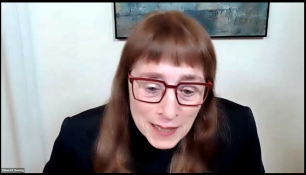 One of the first people I met when I started doing this work twenty years ago was a pioneering social scientist at the Smithsonian, Zahava Doering. She became the closest thing I’ve had to a mentor, and it would’ve been even closer to that role if I’d been a better mentee. Even as she battles health challenges that would flatten lesser mortals, Zahava has been an indispensable advisor to our COVID-era national study and a wellspring of ideas, alternatives, references, connections, critiques, and creative energy. (Who do you think recommended Glaude’s book on James Baldwin?) She has also been writing up a storm about the social purposes of museums in the US and elsewhere, including holocaust museums and memorials. And she just began an organizing effort for America’s museums to leverage their public trust by playing a key communication role in the vaccine effort — and even become a network of vaccination sites. I know, this is starting to sound like Nandi Bushell with a PhD. Zahava’s ability to learn, change, and grow over the course of her long career while never losing the ethical thread is something I deeply admire.
One of the first people I met when I started doing this work twenty years ago was a pioneering social scientist at the Smithsonian, Zahava Doering. She became the closest thing I’ve had to a mentor, and it would’ve been even closer to that role if I’d been a better mentee. Even as she battles health challenges that would flatten lesser mortals, Zahava has been an indispensable advisor to our COVID-era national study and a wellspring of ideas, alternatives, references, connections, critiques, and creative energy. (Who do you think recommended Glaude’s book on James Baldwin?) She has also been writing up a storm about the social purposes of museums in the US and elsewhere, including holocaust museums and memorials. And she just began an organizing effort for America’s museums to leverage their public trust by playing a key communication role in the vaccine effort — and even become a network of vaccination sites. I know, this is starting to sound like Nandi Bushell with a PhD. Zahava’s ability to learn, change, and grow over the course of her long career while never losing the ethical thread is something I deeply admire.
#9—Hopeful
Wider acceptance of the fact that art is political
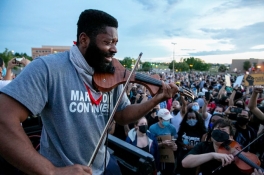 In the bitter year we just endured, almost everything became politicized. Sports, music, poetry, art, tv and movies, comedy, fiction, fashion, science, and everything else we might call culture embraced — or were forced to take on — social and political meaning. But haven’t the arts and other categories of culture always been political, even when they’re busy denying that fact? The idea that (great) art transcends real-world concerns like social or economic policy or racial justice is itself a deeply political statement, one that’s rooted in a system of social and economic patronage, training, and European aesthetic hierarchies. As novelist Viet Thanh Nguyen asked in a piece this week on “The Post-Trump Future of Literature”:
In the bitter year we just endured, almost everything became politicized. Sports, music, poetry, art, tv and movies, comedy, fiction, fashion, science, and everything else we might call culture embraced — or were forced to take on — social and political meaning. But haven’t the arts and other categories of culture always been political, even when they’re busy denying that fact? The idea that (great) art transcends real-world concerns like social or economic policy or racial justice is itself a deeply political statement, one that’s rooted in a system of social and economic patronage, training, and European aesthetic hierarchies. As novelist Viet Thanh Nguyen asked in a piece this week on “The Post-Trump Future of Literature”:
[I]n 2021, will white writers retreat back to the politics of the apolitical, which is to say a retreat back to white privilege?
Thanks in part to a wrenching 2020, our field is beginning to get this — and that’s a good thing. It’s allowing us to have real conversations about, for example, decolonizing museum collections or musical canons, rethinking governance structures, and weaving arts and culture into all kinds of social and community purposes that were once dismissed or devalued. Let’s not lose that momentum.
Photo: Giles Clasen, 2020 (Violinist Jeff Hughes plays Tupac Shakur’s “Changes” at a June, 2020 vigil in Colorado to honor Elijah McClain).
#10—Grateful
The funders and partners making CCTC possible
I’m humbled by the trust and support of several foundations that have been funding the Culture + Community in a Time of Crisis study during 2020 and/or will be funding the next phases in 2021. They include the Wallace Foundation, which has been leading the way since the start, Terra Foundation for American Art, Art Bridges Foundation, Barr Foundation, and William Penn Foundation. FocusVision and Microsoft Corporation are providing crucial in-kind contributions. We’re also fortunate to be working and learning with our extraordinary colleagues at LaPlaca Cohen, who have been producing Culture Track for the field since 2001. And I’m grateful to the expert advisors and consultants who have lent, or will lend, their time and perspective to make sure this work is as inclusive, deep, and change-generating as possible. It takes a village, and I’m lucky to be part of this one.

What are you feeling grateful or hopeful about as the new year begins? Shoot me an email or tweet at me. It’s time to move forward. Shake it off. Bring it on.
a
Main photo at top: Giles Clasen, 2020. Violinists gather for a musical vigil for Elijah McClain, who was killed by police at the age of 23 in 2019.

